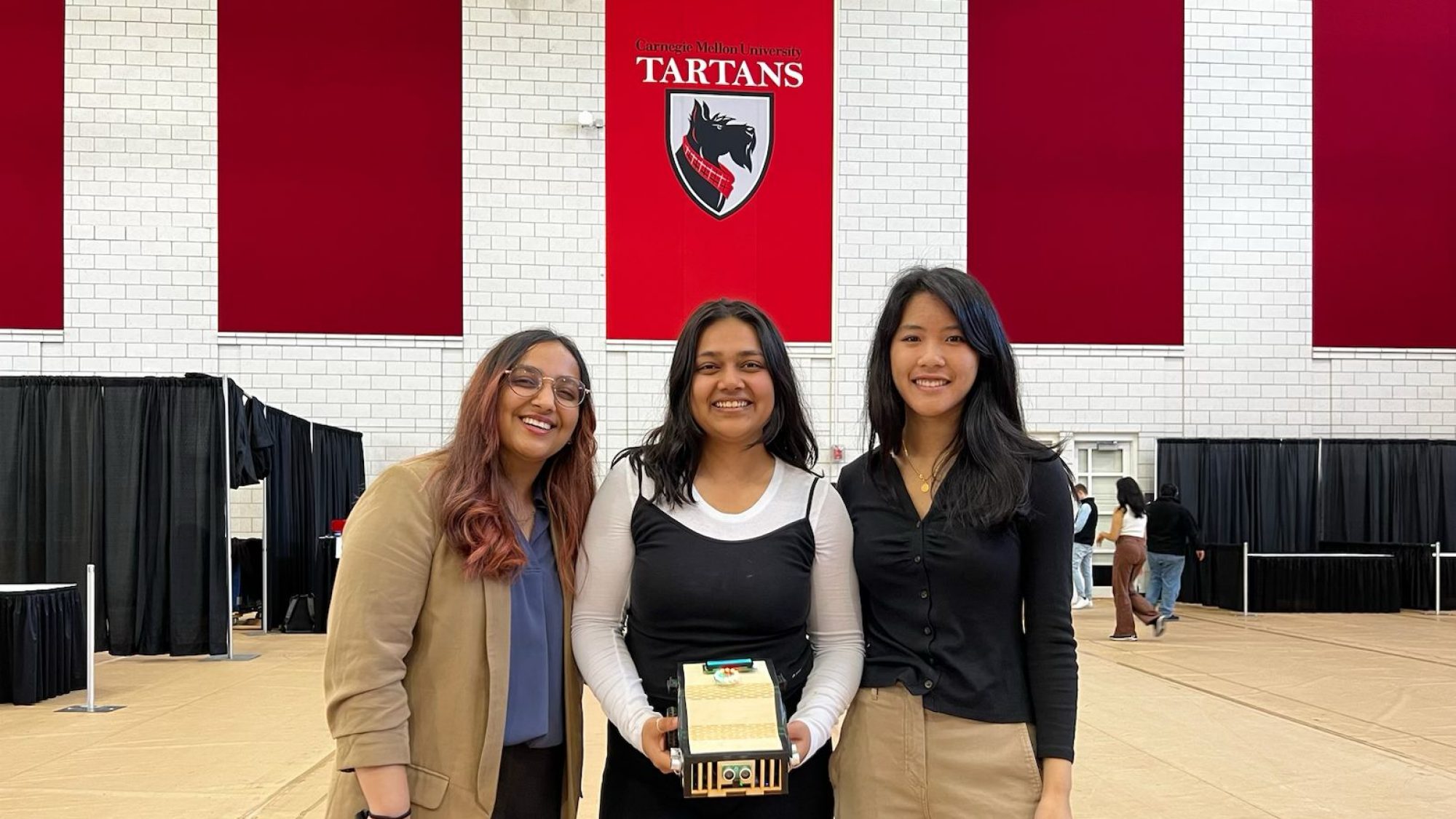The past weeks, I worked on various improvements to the robot including modifying and reprinting the design of top and back panel, integrating two new ultrasonic sensors on the side of the robot to reduce obstacle collisions, and making various adjustments to the scent detection and confirmation logic to improve the accuracy of detection.
With regards to the robot exterior, I redesigned the top of the robot to include cutouts for the LCD screen and newly added neopixel so that all of the wiring is hidden inside the robot and it looks more finished overall. I also added vents to the back of the robot to help with airflow throughout the chamber. Lastly, I drilled two holes on the side of the robot to install the two new side ultrasonic sensors. The two ultrasonic sensors were added to help prevent the robot from running into the scented object, which occurred often while it was scanning. I initially just tried to implement logic that made the robot reverse slightly if it detected a side object during scanning and then continue its scans from the same position. Getting the robot to reverse while preserving the scan angle actually required some significant effort which my team assisted me with in debugging. While testing the obstacle detection, we also decided that it would be valuable to change the logic for obstacle avoidance during random exploration as well due to some issues with the robot getting stuck when facing an obstacle. I changed it so that if the front ultrasonic sensor is triggered, it reverses and then continues to a new random coordinate, and if a side ultrasonic sensor is triggered, it rotates 90 degrees in the opposite direction. Lastly, I changed scent detection and confirmation logic to also take into account readings from the ENS 160 TVOC channel in addition to the Grove ethanol channel. The Grove sensor has had sensitivity issues where the ethanol value will not change at all unless the scent is very close. The ENS 160 TVOC channel is more sensitive to the scents at a farther distance, but is also more prone to random spikes which poses the risk of triggering more false detections. We tested different thresholds and logic for using the two sensors and will continue to tune this if necessary.
In the upcoming week, my main focus will be assisting with the testing of the robot and making any adjustments to the robot according to our observations. We don’t anticipate to make any more major system changes — the main goal is to improve the reliability and accuracy of the scent detection for our demo.
